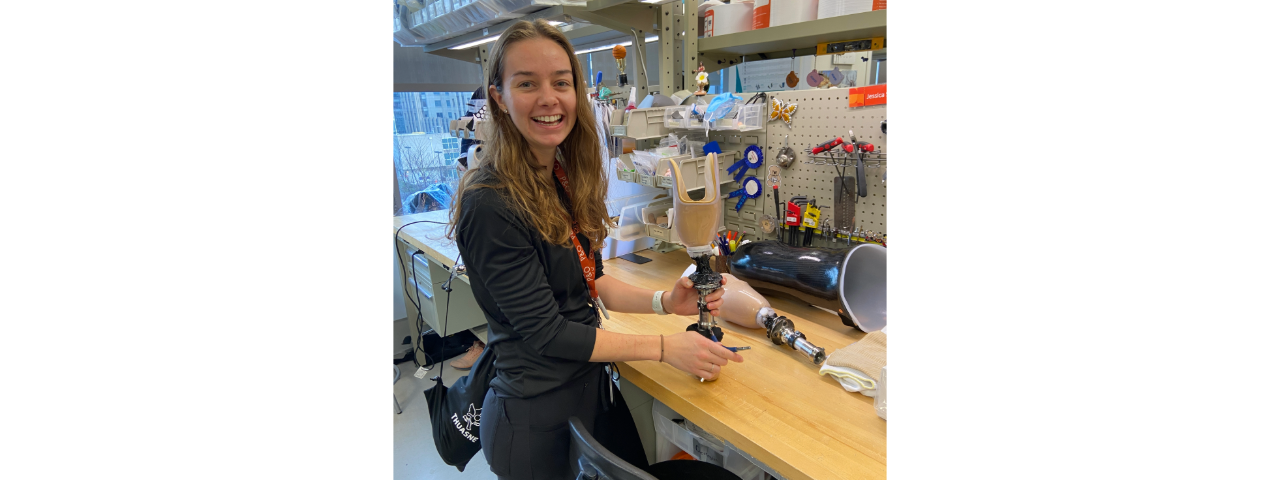Body
Today, Shirley Ryan AbilityLab's Performing Arts Medicine Program is led by Maria Reese, MD, who treats a new generation of dancers, musicians and actors who need specialized rehabilitation care because of the unique physical and emotional challenges they face.
“Artists are athletes who tell stories,” Dr. Reese says. “They transform their audience with their movement, music and persona.”
Read below to learn more about Dr. Reese and the unique aspects of this growing branch of physiatry.
How did you become interested in medicine focused on performing artists?
Body
I grew up dancing — primarily ballet and jazz — and playing piano. In college, I was part of several dance performance troupes that did hip-hop, contemporary and social dancing. After college, and before medical school, I earned a bit of money as a social dance performer and instructor. I danced and taught domestically and internationally: swing, blues and salsa dancing, among other forms. Today, I no longer perform … unless you count the impromptu dance parties with my 2- and 5-year-olds!
What led you to physiatry?
Body
My path was anything but direct. In college, I studied human biology. Then, I went on for a master’s in sociology, focusing on organizational behavior. I was planning to pursue nonprofit work with the ability to work internationally — yet found that I missed working directly with the people I was going to be helping. I decided to become a doctor, playing catch-up with pre-med course work and opportunities like volunteering in free clinics and research. I ended up in medical school at Keck School of Medicine of USC. As I was doing my rotations at Los Angeles County Hospital’s busy Level 1 trauma center, I’d always wonder about my patients: “So, what happens next? How do they get back to their life, their family, their job? How do they learn how to approach the world again?” Then, I realized this was exactly what physiatrists help patients navigate! I was fortunate to have the opportunity to do my residency here at SRAlab. While rotating in the Sports Medicine and Musculoskeletal Medicine clinics, I was drawn back to my roots and love for dance and movement. I recalled how the physicians I had seen for injuries from dance growing up didn’t “get it” — and realized that I could meld my two worlds together and I could help performing artists recover and get back to their art.
As I was doing my rotations, I’d always wonder about my patients: 'So, what happens next? How do they get back to their life, their family, their job? How do they learn how to approach the world again?' Then, I realized this was exactly what physiatrists help patients navigate!
Dr. Maria Reese
What are the backgrounds of typical patients in the Performing Arts Medicine Program?
Body
We care for patients with a variety of backgrounds, from amateurs, both young and mature, to professional, seasoned dancers, musicians, actors and visual artists. We currently have partnerships with several theaters in Chicago: the Lookingglass Theatre, the Chicago Shakespeare Theater, the Goodman Theatre, Steppenwolf and Ravinia. We care for active and retired performers, teachers, crew members, stagehands, directors and artists. We support those with straightforward injuries and those with complex neuromuscular disorders. We also care for those who have had prior neurological insults — like a stroke — who want to return to their art. We see performing artists from all over who come to our institution for an expert evaluation.
What are the most common conditions and arts disciplines that you treat?
Body
Of the performing arts disciplines, I primarily see dancers, musicians and actors. There is a great breadth of conditions that I treat: neck and low back pain, lateral epicondylopathy (commonly called tennis elbow), various neuropathies, knee and hip pathologies, and pelvic floor issues.
All too often, artists are told, 'Rest. Take time off.' This can be unrealistic and does not acknowledge their passion, drive and love for their art form.
Dr. Maria Reese
What is your philosophy of treatment?
Body
Our primary goal is to treat the whole patient. We focus on the primary pain or symptom generator, and also look for the contributing factors in order to help prevent re-injury. We assess globally and specifically. For instance, for a pianist with wrist pain, I examine from the spine down to the arms, then the wrists and hands. For the vast majority of patients, we need to make adjustments upstream to their symptoms to optimize their recovery. Additionally, there is great value in having performers demonstrate with their instruments or demonstrate their dancing or staging to better appreciate what they are experiencing. Lastly, I strive to keep the performer-patient participating in their art. All too often, artists are told, “Rest. Take time off.” This can be unrealistic and does not acknowledge their passion, drive and love for their art form.
Is performing arts medicine a growing specialty of physiatry?
Body
Yes, indeed! SRAlab has one of the oldest and most well-established and well-respected programs of this kind in the U.S. We’re now seeing more understanding and acceptance of the overlap between athletes and artists. In 2011, the American College of Sports Medicine and PAMA joined forces to create the “Athletes and the Arts Initiative” to help improve care for performing artists by integrating the sports and performing arts worlds. Performing arts medicine is growing and more programs are being established, typically as part of grassroots efforts by interested and dedicated clinicians — much like the late Alice Brandfonbrener!


